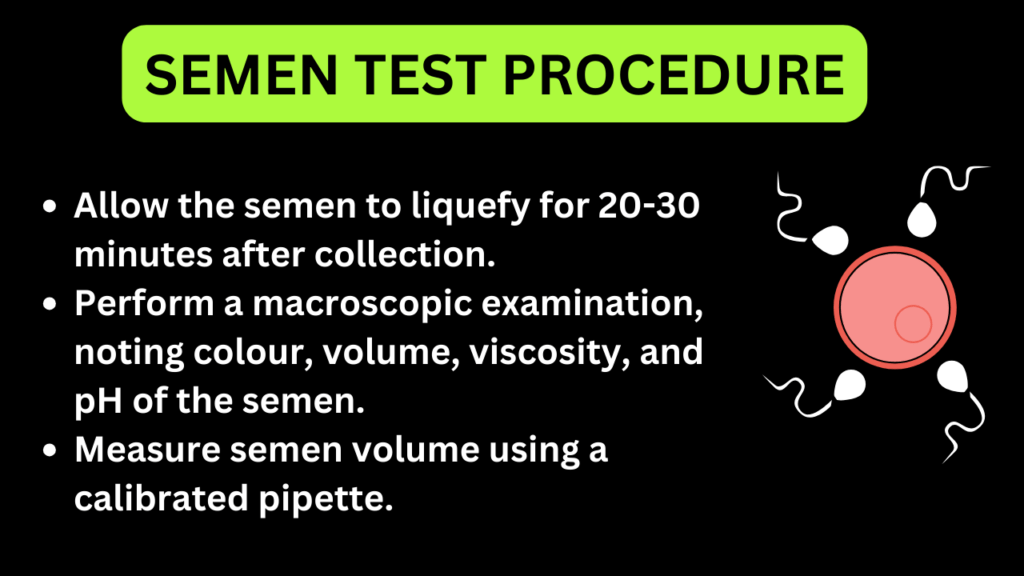A semen analysis is a test that assesses various parameters of semen to evaluate male fertility. It provides valuable information about sperm count, motility, morphology, and other factors.

Here are the key STEPS you will take for the semen analysis test procedure.
Patient Preparation
- Advise the patient to abstain from ejaculation for 2 to 5 days before the test, as this period can affect sperm count and motility.
- Provide the patient with a sterile, wide-mouthed container for semen collection.
- Instruct the patient to collect the entire ejaculate in the container.
Collection of Semen
Semen is usually collected through masturbation. Alternatively, if there are religious or cultural concerns, the semen can be collected through the use of a special condom during intercourse.
Handling and Transport semen sample
- Emphasize the importance of delivering the sample to the laboratory within 30 minutes to 1 hour of collection.
- Maintain the sample at body temperature during transport to preserve sperm motility.
Laboratory Setup
- Ensure the laboratory is equipped with a microscope with phase-contrast or differential interference contrast optics.
- Use a warm stage to maintain the sample at a temperature close to body temperature (37°C or 98.6°F).
Semen Analysis
- Allow the semen to liquefy for 20-30 minutes after collection.
- Perform a macroscopic examination, noting colour, volume, viscosity, and pH of the semen.
- Measure semen volume using a calibrated pipette.
- Assess sperm concentration using a hemocytometer or automated sperm counter.
- Evaluate sperm motility by examining a portion of the semen under the microscope. Classify motility as progressive, non-progressive, or immotile.
- Analyze sperm morphology by preparing a thin smear of semen, staining it, and examining under high magnification. Evaluate the percentage of normal sperm forms according to strict criteria.
Semen test Reporting
- Compile the results into a comprehensive report, including values for volume, concentration, motility, morphology, and any additional findings.
- Provide interpretation and reference values for each parameter.
- Share the report with the referring healthcare professional.